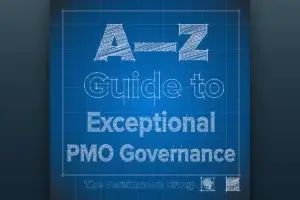You’ve seen them before: the rising star who electrifies meetings with brilliant ideas but occasionally leaves a trail of bruised egos in their wake. The visionary whose insights could revolutionize your industry—if only they could smooth out their rough edges. These high-potential, high-maintenance leaders-in-training represent both an extraordinary opportunity and a significant challenge for any organization.
These individuals often become the transformative leaders that organizations desperately need. However, the journey from high potential to high performance isn’t always smooth. That’s where your role as a mentor becomes crucial.
The Promise of Potential
It’s easy—and often right—to be excited by potential. We see flashes of brilliance and imagine the heights our organization could reach with this person at the helm. Many of today’s most successful CEOs and industry leaders were once seen as brilliant but difficult to manage.
However, it’s important to remember that potential is just that—potential. It’s the promise of future performance, not a guarantee. Your job as a mentor is to help turn that potential into consistent, positive results.
Before diving in, take a moment to consider: Are there other talented individuals in your organization whose potential might be less obvious but equally valuable? Not all great leaders are overtly ambitious or attention-grabbing. Ensure you’re not overlooking quieter team members who might have just as much leadership potential.
Tough love isn’t just a cliché; it’s a critical tool in the development of high-potential leaders. The magic happens in the tension between support and challenge. It’s about pushing and nurturing at the same time, transforming potential into real prowess.
The Complexity of High Maintenance
Now, let’s address the elephant in the room: the challenges of mentoring high-maintenance employees. These individuals often require more of your time and energy. They may test the patience of their colleagues or push the boundaries of your organizational culture.
But here’s the thing: this “high maintenance” behavior often stems from the same drive and passion that makes these individuals valuable. The key is channeling that energy productively.
Ask yourself:
- How can I harness this person’s intensity to drive positive change?
- What opportunities might arise from this individual’s unique perspective?
- How can I help this potential leader balance their ambition with teamwork and emotional intelligence?
“To harness a person’s strengths, sometimes you must tolerate their flaws.” The pivotal question becomes: Do their contributions eclipse their drawbacks? This calculus hinges on the value and impact of the outcomes for the organization.
The Self-Awareness Imperative
If you’ve recognized genuine high potential in an employee, your first task as a mentor is clear: help them develop self-awareness. Without it, all their talent and drive might lead them off course.
Here’s how to start:
- Hold Up the Mirror: Provide clear, specific feedback on their behavior and its impact. Be honest but constructive. If they sometimes alienate team members, address it directly. If their ambition occasionally overshadows their actual contributions, help them see it.
- Psychometric Assessments: Tools like the Hogan Development Survey can uncover potential “derailers”—those behaviors that can emerge under stress and hinder career progress. The key is not just administering the test but having in-depth, reflective discussions about the results.
- Create Growth Opportunities: Self-awareness without action is just navel-gazing. Work with them to set specific, measurable goals for leveraging their strengths and addressing growth areas. Make it clear that their continued advancement depends on this balanced development.
Mentoring Strategies for High-Potential, High-Maintenance Leaders
Once you’ve laid the groundwork for self-awareness, it’s time to tackle development. Here’s where many executives stumble: they treat high-potential development as a separate track, isolated from day-to-day work. Instead, try this mentorship approach:
- Stretch Assignments with Guardrails: Give them challenging projects that push their limits, but with clear boundaries and check-ins. This isn’t about setting them up to fail but about creating controlled environments where they can test their developing skills.
- Pair Them Up: Find a peer or slightly senior colleague who excels where your high-potential mentee struggles. Create opportunities for them to work closely. Sometimes, seeing a different leadership style in action can be more impactful than any training session.
- Feedback Loops: Establish regular, frequent feedback sessions. This isn’t about annual reviews; it’s about creating a constant flow of information about their progress and impact. Be sure to highlight both their successes and areas for improvement.
- Mentorship, Not Sponsorship: Resist the urge to be their champion until they’ve shown real progress. Focus on being a mentor who provides tough love and honest feedback. Your role is to guide, not to clear the path for them.
- Showcase the Power of Influence and Emotional Intelligence: Many high-potential leaders may undervalue emotional intelligence (EQ), seeing it as “soft” compared to their technical skills. Change this perception by highlighting real-world examples of leaders who have achieved extraordinary results through their influence and EQ:
- Share case studies of leaders in your industry who navigated complex relationships to push through major initiatives.
- Arrange meetings with senior leaders known for their EQ, allowing your mentee to hear firsthand how emotional intelligence contributes to business success.
- Point out specific instances where your mentee’s lack of EQ may have hindered their effectiveness, and contrast this with examples of how a more emotionally intelligent approach could have yielded better outcomes.
Emotional intelligence isn’t just about making people feel good—it’s a critical tool for achieving business results, driving change, and leading effectively in complex environments.
Balancing Potential and Challenge: The Mentor’s Path
Mentoring a high-potential, high-maintenance leader is a delicate balancing act. It requires nurturing their strengths while addressing their challenges, pushing them to grow while keeping their ego in check. The key lies in fostering self-awareness, providing structured growth opportunities, and demonstrating the tangible benefits of emotional intelligence.
As you apply these strategies, you’ll likely find that the process challenges and develops you as much as it does your mentee. The patience, clear communication, and emotional intelligence you cultivate will serve you well in all aspects of leadership. In the end, mentoring isn’t just about developing one individual—it’s about building the future of your organization, one leader at a time.










